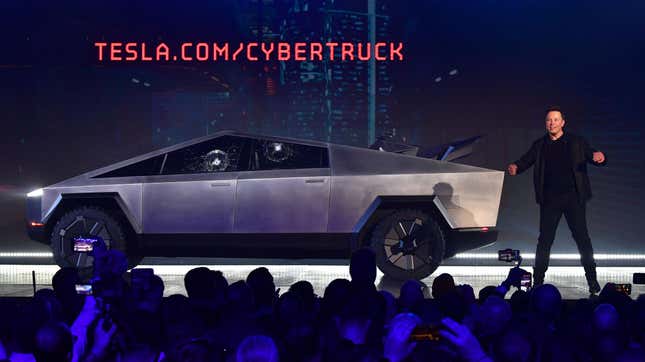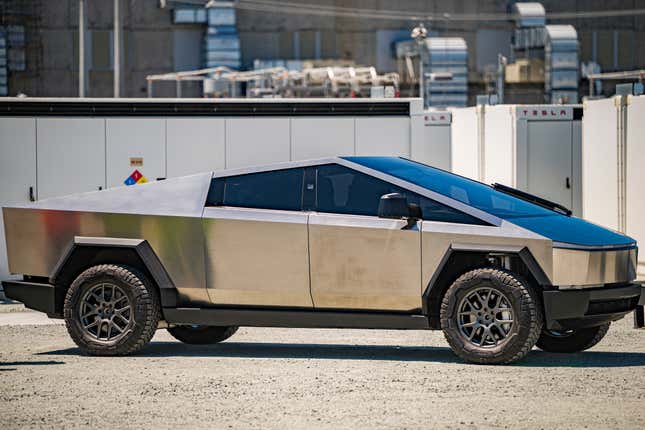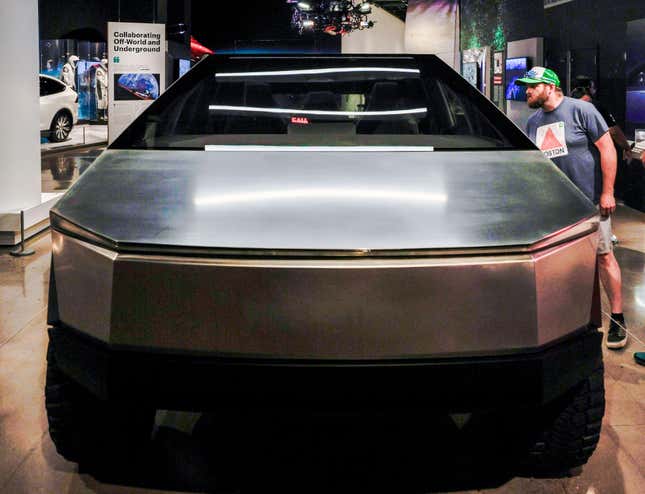
Tesla Cybertruck deliveries are supposed to start on November 30, but not much about the Cybertruck has materialized when or how it was supposed to. Starting with the botched demo that became a meme, Elon Musk has continued to overpromise and underdeliver with the Cybertruck. And now, Tesla is staring at a looming delivery date and a handful of production issues that threaten the Cybertruck’s success.
Musk predicts that the Cybertruck will not reach full-scale production for another 12 to 18 months, according to Bloomberg, which will be full of “blood, sweat and tears.” Presumably, Musk is talking about the EV company, not its customers but don’t discount the possibility. He adds that the EV pickup will likely not reach a production rate of 250,000 Cybertrucks per year until 2025.

The difficulties are centered around key components of the EV, such as the new in-house battery cells, 800-volt charging system and its stainless steel construction, all of which Tesla has never implemented into a single build before. Put another way, the Cybertruck was too ambitious even for Tesla, as Bloomberg reports:
In these respects and others, the Cybertruck will be a big step backward from how Tesla has progressed in its approach to carmaking. The last vehicle Musk spoke about the way he’s described the Cybertruck was the Model X, the sport utility vehicle that’s never reached high volumes because of what its chief executive officer described on several occasions as hubris.
“Model X became kind of like a technology bandwagon of every cool thing we could imagine all at once,” Musk said of the SUV in May 2017. “That is a terrible strategy. You really want to start off simple and add things over time.”
Whereas Tesla has been praised for its simplification of auto production, the Cybertruck is a watershed product that the company will struggle to scale because Musk insisted on “bells and whistles” that no one really asked for. The Cybertruck doesn’t lend itself as easily to mass production as Tesla’s other products. It’s the opposite of iterative design, which is best for scale production.
But no one asked for stainless steel panels that are hard to fit together, which prompted the infamous “sub-10 micron accuracy” email. And no one asked for a pickup truck that was inspired by a dystopian novel and its film adaptation, as one designer cited by Bloomberg notes:
“The problems that are very evident with the Cybertruck are problems with the concept itself,” said Eric Noble, president of The CarLab, an automotive product and design consulting firm. “The market wasn’t asking for a stainless steel finish, wacky bed configuration, wacky roof line or wacky side visibility. Those are all answers to a question that the pickup truck market wasn’t asking.”
Elon Musk himself has avoided making any concrete claims of what Cybertruck volume will look like in 2024. Bloomberg cites Musk saying the following during an investor call to more or less defend the vague production schedule:
“If you want to do something radical and innovative, and something really special like the Cybertruck, it is extremely difficult, because there’s nothing to copy,” he said. “You have to invent not just the car, but the way to make the car. So the more uncharted the territory, the less predictable the outcome.”
His estimated timeline for full-scale production of the EV pickup is sometime around 2025, but with Musk any number is usually a best-case scenario that ignores the practical limitations Musk loves to sacrifice for the sake of being edgy. At the rate that the Cybertruck has been going, 250,000 EV trucks off the line might not materialize until well past 2025.
